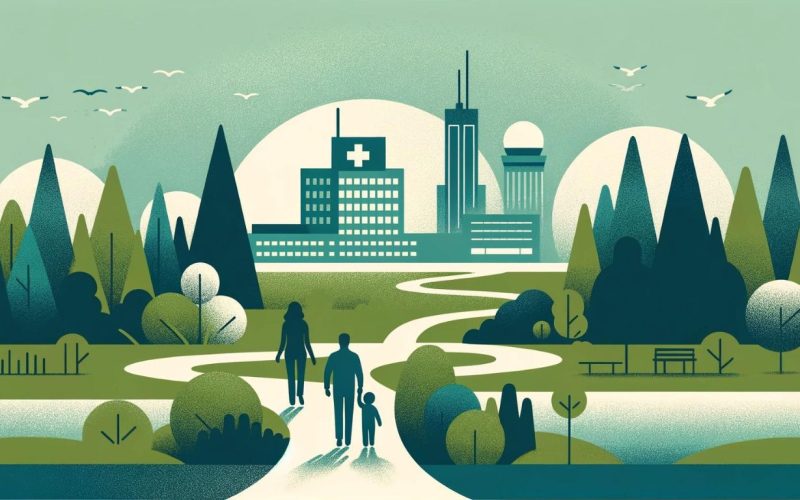Health in the UP: Is it Improving?

Life expectancy is used as an indicator of a population’s overall health. For nearly 120 years it increased steadily in the US to reach 79 years by 2019, but in 2020 it dropped to 77 and just over 76 in 2021.
The statistic is an average that varies by gender, race, geography and socioeconomic status. For example, life expectancy for women is higher (79.1 years) than for men (73.2), while for American Indian and Alaska Native populations life expectancy is 65, which is 11 years below the figure for white Americans.
Those with the shortest life expectancies tend to experience the most poverty and food insecurity, while having less or no access to healthcare. Epidemiologists attribute much of the recent decline in life expectancy to increased deaths from COVID-19, drug overdoses, accidental injuries, heart and liver disease and suicide.
Deaths from drug overdoses in 2021 exceeded 106,000, up from 70,000 in 2019, road accident deaths increased during the same period from 39,000 to 43,000 and suicides went up from 47,511 to 48,183. It is against this backdrop of deteriorating health conditions at the national level that provides the impetus for this study: an examination of overall health in the UP and whether conditions are improving or deteriorating.
County Health Rankings
The data for this study is derived from County Health Rankings, an annual report produced by the University of Wisconsin Population Health Institute and the Robert Wood Johnson Foundation. The health of each county is ranked within each state – from the healthiest to the least healthy–using a model that summarizes the overall health outcomes of each county, and the factors that contribute to health.
There are two health outcome categories: length of life and quality of life using self-reported measures such as poor physical and mental health days. Factors that contribute to health include individual behaviors, access to care, an area’s physical environment, and general social and economic conditions.
Individual behaviors include tobacco use, obesity, diet and exercise, and drug and alcohol use since they influence health outcomes. Access to care indicators include the numbers of uninsured persons, primary care physicians, and mental health providers. Each county’s general socioeconomic condition is profiled using census data that focuses on poverty, unemployment, and education levels.
Finally, the physical environment for each county is measured using air and water quality statistics and housing quality indicators. The data for specific measures are derived primarily from three sources: the National Center for Health Statistics, Center for Disease Control and Prevention Behavioral Risk Surveillance System, and US Census Bureau. For more details on individual measures and the methodology behind the rankings readers are encouraged to visit www.countyhealthrankings.org.
Health Outcome Rankings 2011-2023
Table 1 shows each UP county’s overall ranking in 2011 and 2023 in terms of health outcomes; Keweenaw is excluded on account of its small population. The average rank of the 14 counties in 2011 was 32, by 2023 it was 43 (out of 82).

Most counties’ rankings fell, which means that their overall health deteriorated relative to other Michigan counties. The largest drops are associated with Iron, Baraga, Delta and Gogebic counties, while Marquette and Dickinson experienced the smallest declines; two counties that were in the top 10 in 2011 (Alger and Houghton) fell out by 2023.
Ontonagon showed the biggest improvement, with its ranking increasing from 79th to 56th. Within the state, the top 5 counties for health outcomes in 2011 were in rank order: Ottawa, Leelanau, Livingston, Washtenaw and Alger. Leelanau, Ottawa and Livingston remained in the top 5 in 2023 and were joined by Clinton and Oakland counties (Washtenaw dropped to 6th).
The relative stability in ranks among the healthiest counties is in marked contrast to most UP counties. The distinguishing feature of these ‘healthiest’ counties is that they are either popular retiree destinations on Michigan’s west coast (Leelanau, Ottawa) or among the state’s wealthiest (Livingston and Oakland) in the Detroit metro area.
Health Factors’ Rankings 2011-2023
Given the drop in UP health outcome rankings it is not surprising that the conditions affecting health experienced a similar fall, with the average rank dropping from 38th in 2011 to 44th in 2023 (Table 2). Eight of 14 counties experienced a decline in rankings with the largest occurring in Iron County; in contrast five counties recorded improved rankings, most notably Chippewa and Luce.

At the state level in 2011, the top 5 highest ranked counties in order were Washtenaw, Livingston, Ottawa, Oakland and Grand Traverse. There was only one change in 2023, with Grand Traverse being replaced by Clinton County. A comparison of factors contributing to health outcomes found that in 2023 several UP counties are among the highest in the state for persons without health insurance, while UP adult obesity, smoking rates, alcohol impaired driving deaths, levels of physical inactivity and food insecurity tend to be above the state average.
Discussion
The fall in most UP counties’ health rankings is either the result of other counties improving their outcomes or a worsening of UP outcomes. Regardless of the cause, health outcomes have deteriorated in the region.
COVID-19 produced an increase in deaths. For example, Iron County’s 2021 death rate from COVID was five times higher than in Leelanau County, and in Luce County the rate was three times higher. Fatal injury rates increased across the board between 2011 and 2021, but doubled in Baraga, Gogebic, and Luce counties. Finally, death rates from heart disease increased in all counties except for Gogebic, Houghton, Iron and Ontonagon.
In sum, overall health outcomes have fallen across the region. The reasons behind this phenomenon are complex and beyond the scope of this article. The key point is that life expectancy has fallen. Looking ahead, with COVID-19 behind us (or so it appears), it will be interesting to see whether the UP continues to lag behind the rest of the state in terms of health outcomes.







Lack of good healthcare
We must continue to inform and prompt habit changes toward wellness including better diet, more exercise, no tobacco, and moderate use of alcohol, into the whole community through our businesses, organizations like the YMCA, hospitals, churches, and personal outreach to those we care about. We can all have a role in helping to make life better for our neighbors and ourselves.
the eastern end of the UP fits the definition of a food desert
It would take research, but I think it would be helpful to analyze some of the contributing factors, especially changes pre and post pandemic. In order to address these declines the various conditions need to be better understood
Thanks for sharing the recap of County Health Rankings and Roadmaps data! The 2021 Upper Peninsula Community Health Needs Assessment is also available online for those interested in a deeper dive: https://www.wupdhd.org/2022/07/25/upchna/.